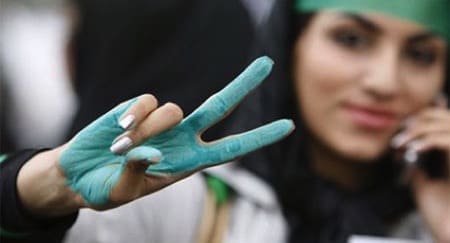
Where it all began? Although not an Arab country, and despite its protests not leading to a regime's overthrow, Iran's uprisings in 2009 set a tone of rebellion in the Middle East. It also bore many hallmarks of the coming revolutions, marked by a distinctive colour, use of social media and having to battle severe pushback from the country's security forces.
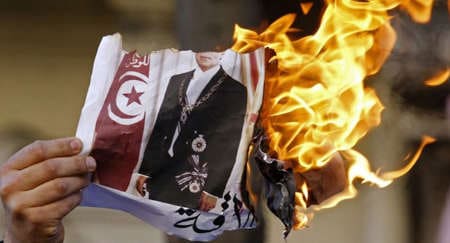
You're fired! Tunisia was the Arab cradle of the Arab Spring and a lot depended on its uprising's success. The government of President Zine El Abidine Ben Ali had all the stereotypical traits of dictators in the region, including corruption, suppression of political opposition and heavy-handed security forces. Once this regime was overthrown - in January 2011 - it was a message to the rest of the Arab world. © Reuters
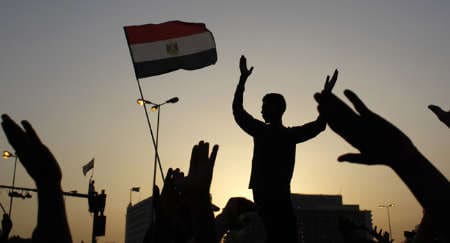
The revolution goes on...Not only did Egyptian protestors come out in their millions for the 2011 uprisings, often risking harm in doing so, but have they come out in protest again several times since. Here Egyptians protest at the life sentence given to former dictator Hosni Mubarak. They called for him to suffer the same fate as least 800 of their fellow protestors during the uprisings - death. Protestors have also been out demonstrating against the role of the military and autocratic decrees. © Reuters
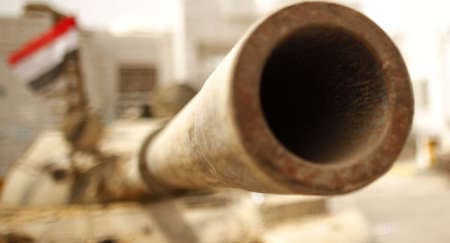
The messy revolution...Yemen is already a country with enough complications (including running out of water and being the base of new al Qaeda branch). Its revolution proved almost as complicated, with first a seemingly peaceful transition which stalled, then a violent transition which injured but did not kill President Ali Abdullah Saleh, a period with a power vacuum and finally the flight of the country's dictator followed by democratic presidential elections. © Reuters
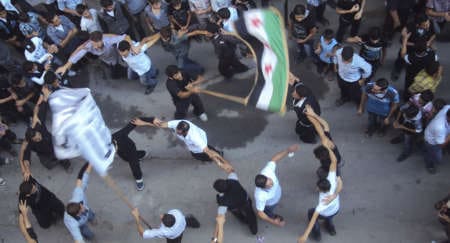
It ain't over yet...Many saw Syria as the country that the Arab Spring may bypass. Governed by a particularly ruthless regime, having major ethnic and religious diversity and with a regime supported as a proxy by third countries, few saw the protestors as having an easy task. And so it has proved. Syria's revolution is arguably the one that now most resembles a civil war. © Reuters
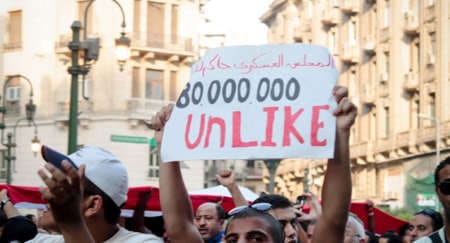
Twitterevolution? The Arab Spring has at times been portrayed as a social media revolution. While gathering support on Facebook pages, releasing information on Twitter and SMS-organised demonstrations all played a role, the jury is still out on how central social media was. For example, sceptics point out that Egyptian revolution demonstrators' numbers actually [u]increased[/u] after President Mubarak cut internet access. © Reuters
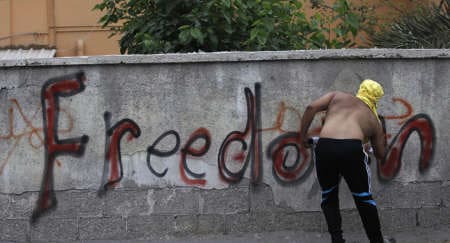
What it's all about...In some countries, even the simple act of what we see here - writing freedom on a wall - was a highly risky activity just two years ago. © Reuters
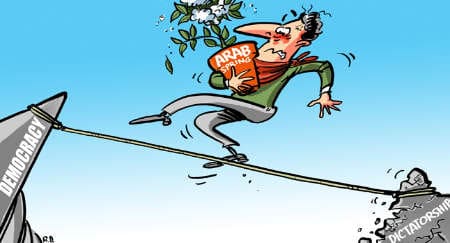
Why the story continues...Many countries who have thrown off the shackles of dictatorship over the last few decades have found transition difficult. It is no different for the newly democratic Arab countries. And expectations can overtake realism. Despite this, the reality is that, nearly two years after the Arab Spring claimed its first dictator, the Arab Spring countries, people and largely governments are still trying to move forward rather than backwards. © Rytis Daukantas
